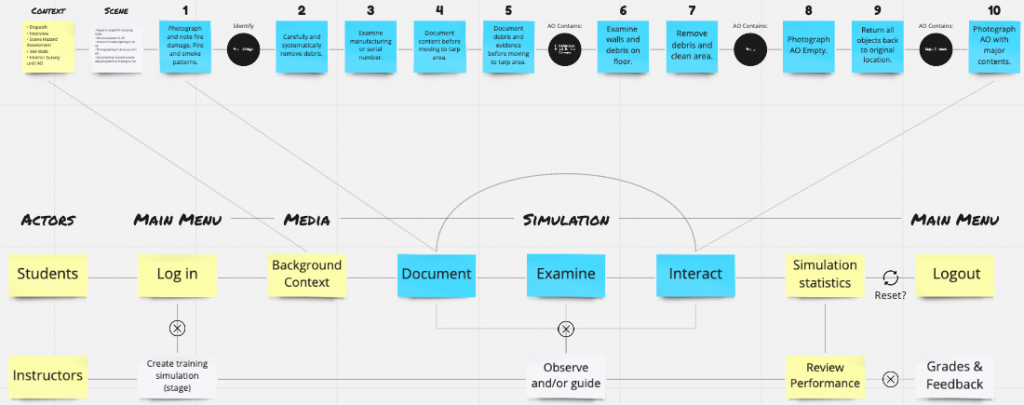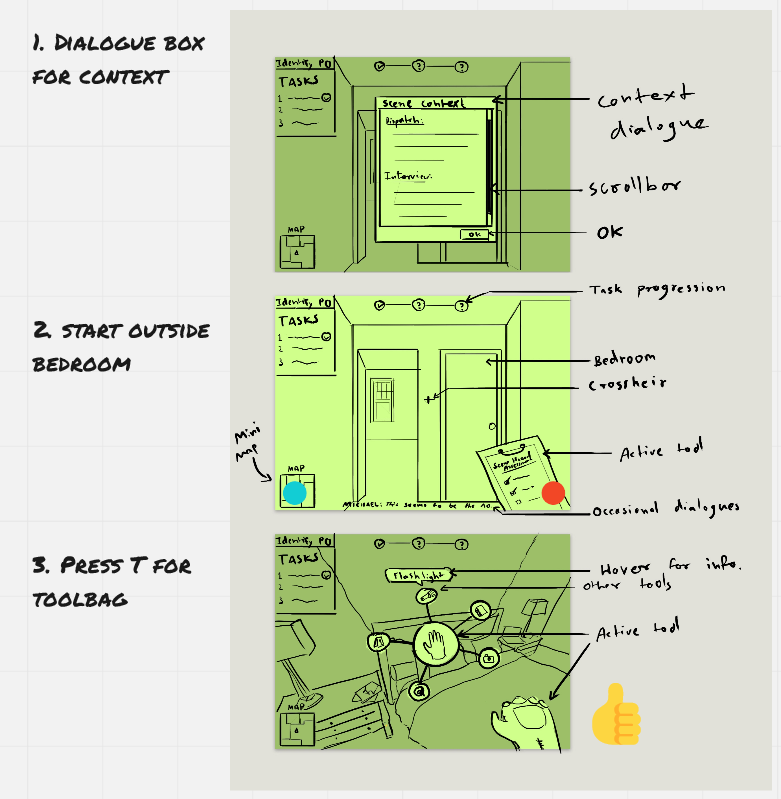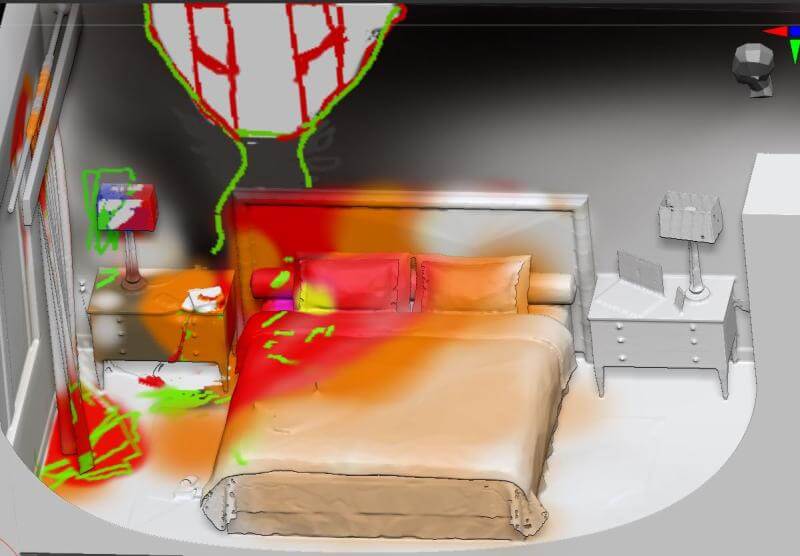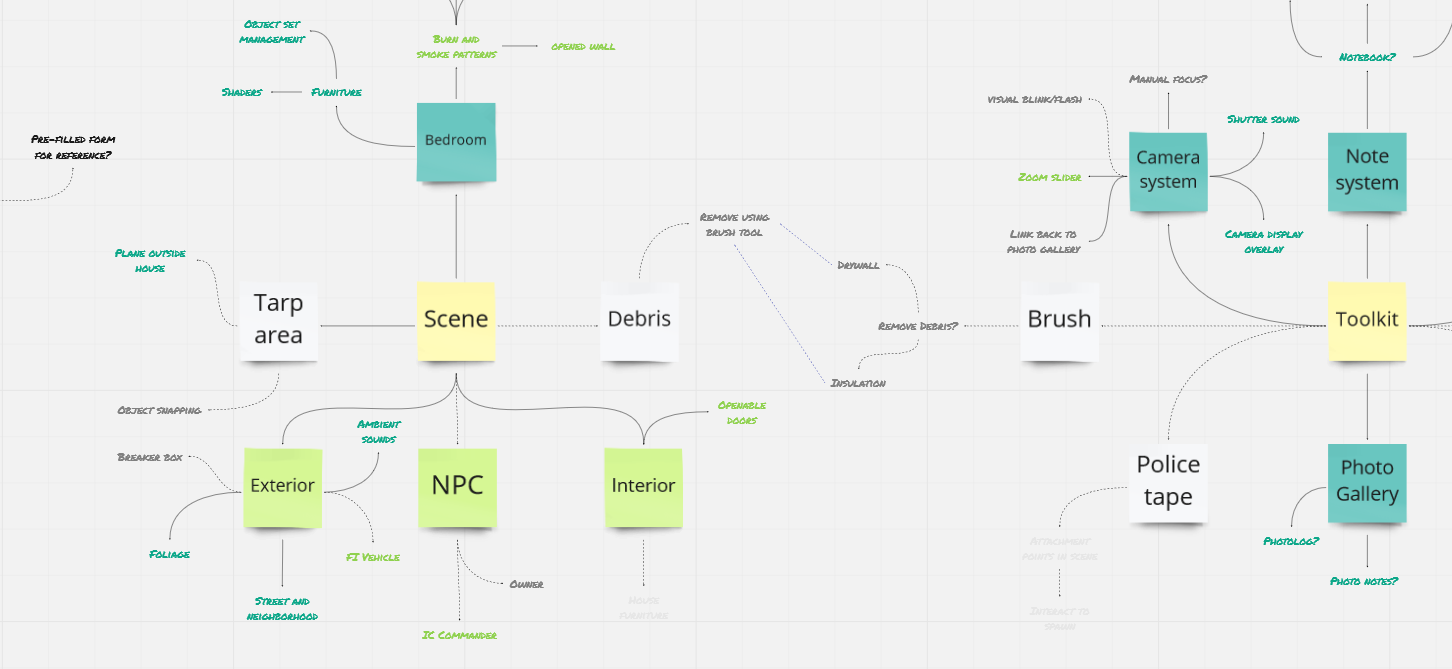Fire Investigation Simulator
Team FlashoVR was tasked to build a serious fire investigation training game that would be used as an immersive educational and reviewing tool for Justice Institute of BC's students and instructors, specifically for their Fire Cause & Origin Level II class. Through this computer-based training experience, fire investigation trainees will be learning how to follow step-by-step safety and evidence collection protocols at the burn site.
My Roles: Scrum Master, 3D & UX Designer.
I was responsible for leading design sprints, assets pipeline technical direction, unity scene management and git control. My secondary roles were to produce realisitc 3D assets, design and iterate user experience, design and code solution systems with C# along with our part-time developer Ellen Brown.
Team: Aashay Mehta, Tom Hackett, Gini Choi, Al Kadivar, Karl Kanger, Chenjie Whatley, Ellen Brown.

Our main goals were to:
(1) Minimize the cost of burning shipping containers to provide a life-like fire investigation scenario by better preparing the students for this practical test;
(2) Make it safe and repeatable for the students to practice and memorize the fire investigation protocol;
(3) Make it remotely accessible for students on and off campus to practice the theoritical aspect of Fire Cause & Origins Level I class before moving onto Level II.
And our solution featured:
- A good mechanism for fire investigation such as moving and digging objects.
- A function for trainees to take photos as evidence and generate reports.
- Data tracking for review and reflection.
- A final package that can be easily installed and used in different physical settings.
Process
Again, at CDM we always go with the agile methodology, and beginning phases were just ripping the brief apart and researching.
For design sprints I relied heavily on SPRINT's methods for this project. There has been many inspirational moments with this team, this was a self motivated and self organizing dream team.
So we start by discovering the product's journey MAP first, since this would help us ask the right questions and get things cleared up with the stakeholders in the earlier stages.

Once we had that down, we moved on to ideating and brainstorming, one of my favorite methods to brainstorm solutions is the 4 step sketch. This is a great method for rapidly sketching out ideas and discussing over the most amount of ideas in a short amount of time. This ensures whatever we decide to vote on is extemely clear to the team before we devolve into prototyping the solution.

Somewhere down the line we had to meet up with subject matter experts to find out how exactly the room would look once it were on fire.

One of the biggest challenges were to understand the movement of heat and fire and align on it as a team and make sure we captured the experts' knowledge as well. In one meeting we decided to sketch in 3D to figure out where the fire damage and smoke damage would map out in the room.

There was certainly a lot of different areas we were developing simultaneously, one might wonder, how does a big team of 7 people function with such clarity and keep track of all the various items we were developing simultaneously? Here's the answer, we would use Mind Maps with color coded stickies to depict which ideas were agreed upon, excluded, in progress and/or implemented.

And our team worked hard without compromising on fun along the way!
Awards
DFP CREATE Design Showcase's Impact Award (Gold)
Best of category 2021 WEB: Training / E-Learning (Gold)